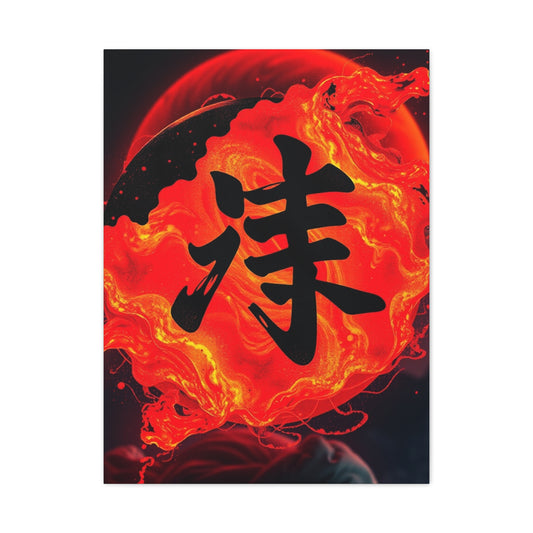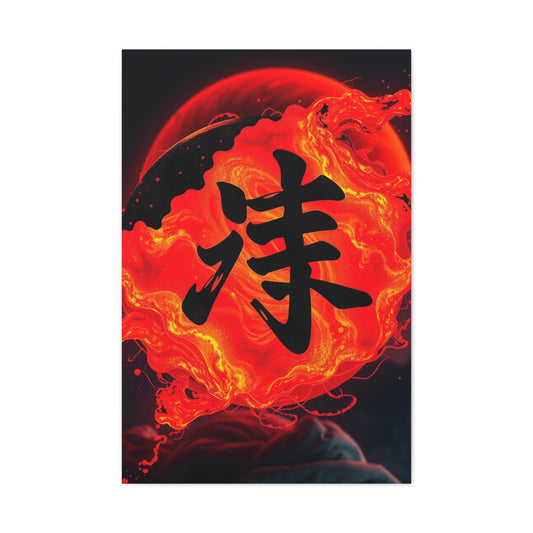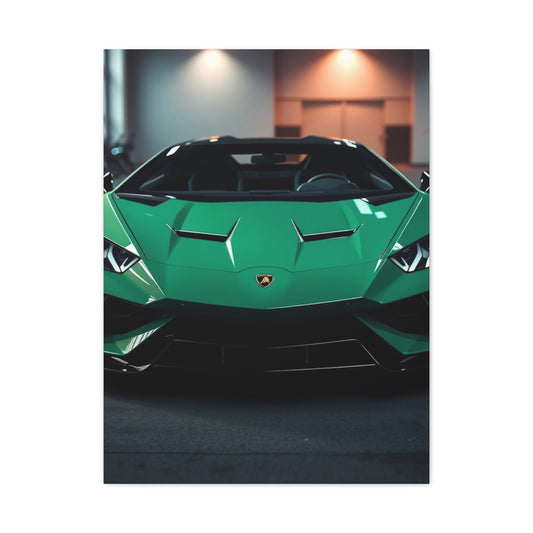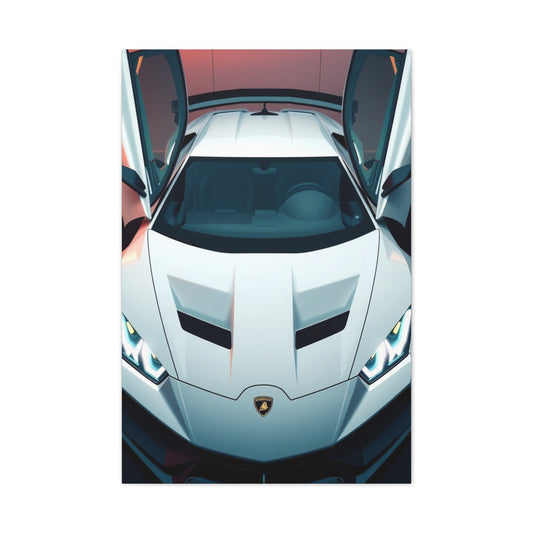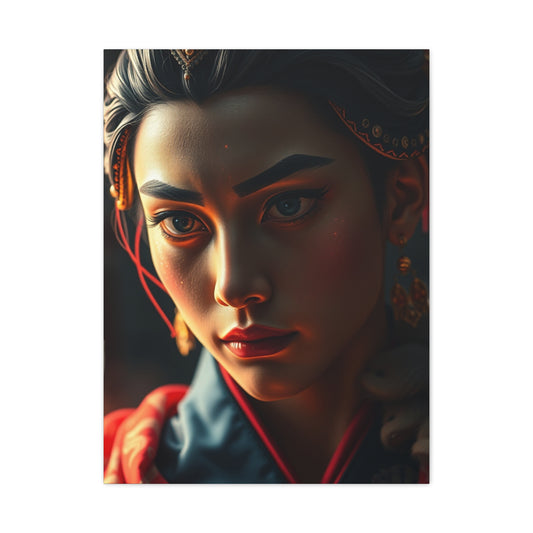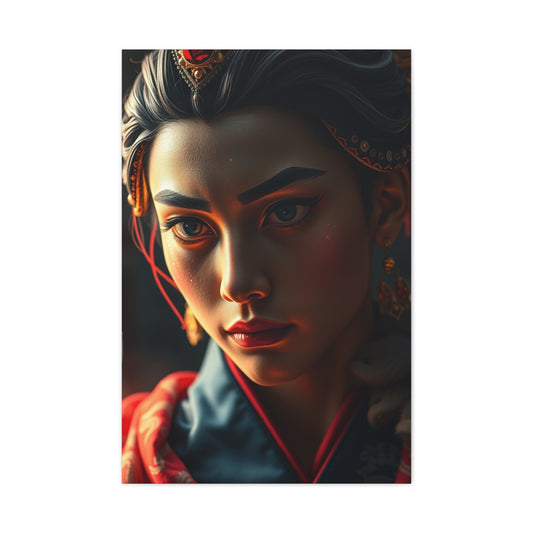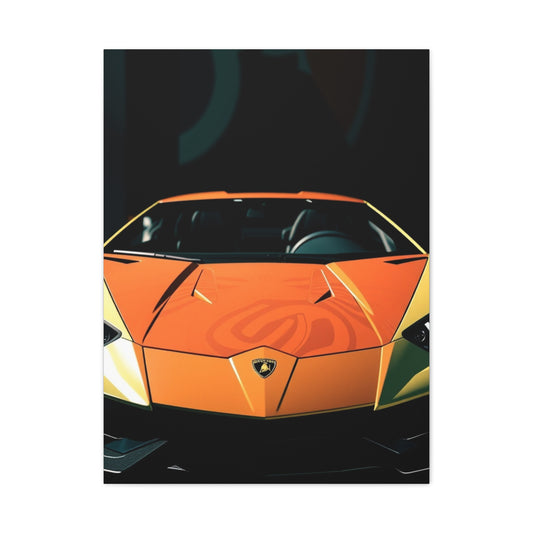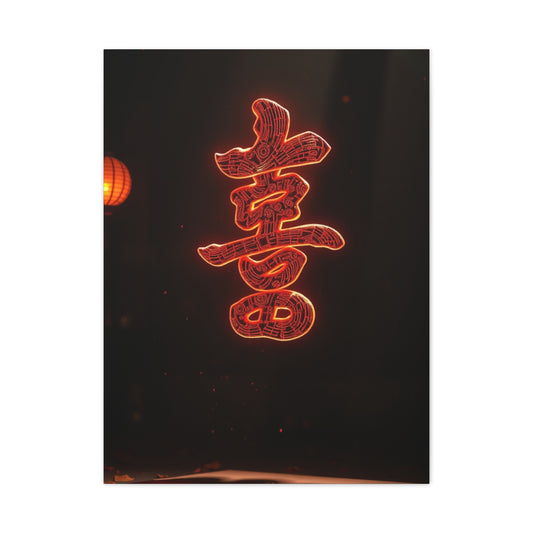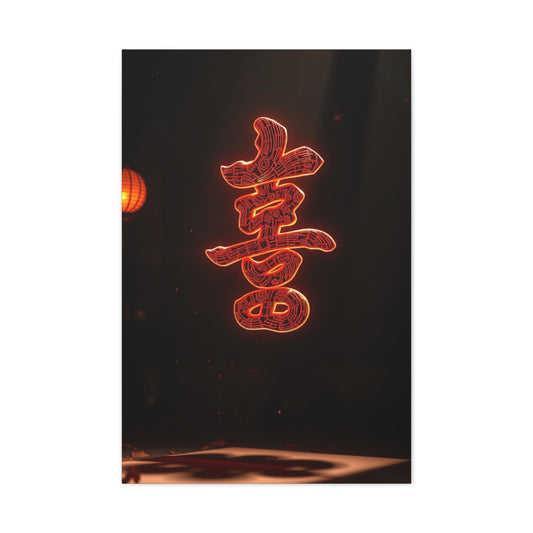Macro photography thrives on detail, contrast, and precision. However, even the most carefully composed shot can fall flat if the lighting isn't right. Harsh, direct flash often ruins macro compositions by creating overexposed highlights, unnatural reflections, and deep, jarring shadows. This is where a flash diffuser steps in as a game-changing accessory.
Instead of purchasing expensive lighting modifiers, you can craft a simple yet effective DIY flash diffuser right at home. It’s an economical solution that delivers professional-looking results, especially in close-up photography where lighting control is paramount. In this guide, we’ll take you step-by-step through crafting a reliable flash diffuser using everyday materials—ideal for anyone who enjoys hands-on projects and practical photography hacks.
The Importance of Soft Lighting in Close-Up Photography
In the specialized realm of macro photography, lighting plays a pivotal role in defining the mood, clarity, and overall visual impact of an image. When working at such a short distance from the subject, every subtle shadow, highlight, and reflection becomes magnified—making lighting choices not just technical, but artistic. The unique constraints of macro work mean that even small adjustments in illumination can significantly enhance or impair the final image.
The use of a flash diffuser in macro photography addresses the fundamental issue of harsh light produced by built-in or external flashes. These light sources, though powerful and convenient, are often too direct for the delicate nuances required in macro imagery. The light they emit tends to be concentrated and intense, which results in blown-out highlights, harsh shadows, and unflattering glare on reflective surfaces like petals, insect wings, or dewdrops. These lighting flaws disrupt the organic texture and tonal depth that macro photographers strive to showcase.
By integrating a flash diffuser into your workflow, you're essentially transforming a pinpoint light into a broader, softer illumination. The diffuser acts as a spreading surface that enlarges the origin of light, diffusing its intensity across a wider area. The result is a wraparound effect, where the subject is bathed in a balanced glow rather than harsh beams. This kind of lighting is indispensable when your objective is to reveal the intricate patterns on a bee’s eye, the velvet finish of a leaf, or the gentle curvature of a seashell.
A softer light also ensures color fidelity. Under harsh lighting conditions, colors can appear overly saturated or washed out. Soft, diffuse light provides even exposure, preserving subtle color gradients and enhancing the vibrancy of natural tones. This is particularly critical when photographing flowers, where slight overexposure can turn deep magentas into pinks or distort the rich blues of delicate petals.
Beyond aesthetics, the practical advantages of soft lighting are just as compelling. A major challenge in macro photography is depth of field, which is inherently shallow when working at close distances. Photographers often use small apertures to achieve greater depth, but this reduces the amount of available light, requiring the use of flash. However, when using undiffused flash, even minor shadows or highlights become overemphasized. A diffuser helps mitigate this issue, allowing you to maintain critical sharpness and detail without compromising light quality.
Soft lighting also reduces visual noise in the background. When the foreground is lit harshly, it casts sharp shadows that can clash with or obscure the background. Diffused light transitions more naturally from subject to backdrop, creating a smoother bokeh and a more immersive feel. This seamless integration between subject and environment enhances storytelling and draws the viewer’s attention exactly where it’s needed.
For photographers who enjoy fieldwork, diffusers bring an additional layer of utility. In outdoor settings, natural light can be inconsistent. Sunlight filtered through tree canopies or cloud cover creates variable lighting conditions that can ruin exposure. A flash diffuser provides consistency. It becomes your portable, controllable light source—allowing you to shoot confidently in any environment, from dense forests to breezy meadows. You can also direct the light precisely using a well-positioned diffuser, helping to illuminate difficult-to-reach angles, such as under leaves or behind curled petals.
Moreover, creating your own diffuser can be a rewarding extension of your photography practice. DIY solutions using household materials such as white plastic, paper, or even translucent fabric can perform exceptionally well. These custom diffusers can be shaped to fit your specific lens and flash configuration, offering more precise control than some commercial options. Additionally, understanding how light interacts with various surfaces—reflective, translucent, or textured—will deepen your ability to adapt on the fly and respond to the demands of different shooting scenarios.
Another crucial benefit of soft lighting is its ability to highlight texture without exaggerating imperfections. In macro photography, texture is one of the most compelling elements, whether it’s the fine veins of a butterfly wing or the crystalline structure of frost. Harsh light tends to create deep, exaggerated shadows that obscure fine details and distort the realism of the subject. Soft light, on the other hand, delicately traces the contours, revealing intricate patterns and subtleties that might otherwise go unnoticed.
Even for photographers who rely heavily on post-processing, starting with a well-lit image makes editing far more effective. Overexposed highlights and underexposed shadows can be difficult or impossible to recover in editing software, whereas an image lit with diffused light maintains more usable data across the tonal spectrum. This not only gives you more creative freedom during editing but also ensures higher overall image quality for printing or digital display.
In conclusion, soft lighting is not merely a stylistic preference in macro photography—it’s an essential tool that shapes every aspect of the image. From technical exposure considerations to emotional storytelling, the quality of your light directly influences the impact of your work. Incorporating a flash diffuser into your setup is a practical, affordable, and transformative step toward capturing the stunning detail and natural beauty that defines exceptional close-up photography.
How Light Modifiers Improve Macro Photography Results
Light modifiers, particularly diffusers, dramatically improve the final output of macro images by softening the transition between light and shadow. The unforgiving nature of close-up photography exposes every inconsistency in your lighting setup. That’s why even a slight change in how your flash behaves can lead to substantial improvements in texture reproduction and tonal depth.
These tools enable more nuanced rendering of form, which is vital when dealing with three-dimensional subjects on a two-dimensional medium. For instance, a macro photograph of a snail shell, when lit directly, might look flat or artificial. But with a diffuser, the gentle falloff of light brings out the spiral pattern and natural curves without introducing overexposed highlights or unsightly shadows.
Insects, often a favorite among macro enthusiasts, benefit immensely from this approach. The semi-translucent nature of their wings and compound eyes is beautifully revealed under soft light, allowing for photographs that feel more lifelike and immersive. Similarly, the intricate geometry of frost crystals or the velvet surface of plant leaves becomes more pronounced, adding richness and complexity to your composition.
Beyond subject quality, light modifiers enhance the shooting experience itself. When working in delicate environments—such as near fragile blossoms or skittish insects—a soft, non-intrusive flash is less likely to disturb the subject. This means longer shooting windows, more time to perfect focus, and a higher chance of capturing that decisive moment.
For those looking to improve their macro photography, learning to manipulate light using simple modifiers is a key skill. It helps you visualize how shadows will fall, how colors will be rendered, and how details will be preserved. Ultimately, this skill becomes second nature, allowing you to intuitively adapt your setup for any subject, condition, or creative vision.
Whether you're photographing nature, textures, tiny objects, or scientific details, diffused lighting is a foundational element of professional macro results. And the best part? You don’t need high-end gear to achieve it—just a thoughtful approach and a willingness to experiment.
Why a DIY Flash Diffuser Is a Smart Choice
In the world of photography, especially in macro and close-up disciplines, lighting isn’t just a technical concern—it’s the very soul of image creation. A flash diffuser plays an essential role in controlling how light falls on your subject, yet many photographers, particularly those just starting out, may assume they need expensive gear to manage light effectively. This couldn’t be further from the truth. A do-it-yourself flash diffuser is not only feasible, it’s one of the most adaptable, cost-effective, and ingenious tools any macro photographer can have in their arsenal.
Creating a DIY flash diffuser represents a triumph of creativity over commercial dependency. It empowers you to build something purpose-fit for your gear and shooting environment, using materials that might otherwise end up in the recycling bin. Empty containers, semi-translucent plastics, paper, and reflective foil can all be repurposed into highly effective lighting tools. The tactile process of crafting your own diffuser teaches you how light behaves—how it bounces, softens, and disperses. This understanding translates into better control over exposure, contrast, and shadow detail in every macro shot you take.
Beyond the creative satisfaction, the practicality of a DIY diffuser is hard to match. For field photographers, especially those shooting insects, flora, or other minute subjects, portability is key. Commercial softboxes and lighting modifiers are often bulky and rigid. In contrast, a homemade flash diffuser can be flat-packed, reshaped, or even reconstructed in the field using whatever is at hand. Need something more directional? Alter the tube shape. Want a warmer tone? Try a cream-colored paper as the diffusion layer. The possibilities are endless and, more importantly, personalized.
A self-made diffuser also breaks down barriers for photographers operating on a limited budget. Gear accumulation can be expensive and intimidating, but it doesn’t have to be. One of the most empowering aspects of photography is how accessible it becomes when you adopt a mindset of experimentation. A flash diffuser crafted from everyday items proves that compelling, high-quality imagery doesn’t require a studio setup or premium lighting accessories. It just requires a clear goal and some practical ingenuity.
Equally important is the ability to tailor your diffuser to your equipment. Store-bought diffusers are often generic in design. They may not sit properly on your specific flash unit or might block part of the viewfinder or lens. A homemade version, on the other hand, can be designed to wrap seamlessly around your flash head, angled just right to cover the precise area your macro lens captures. You get to control everything from the angle of incidence to the quality of the diffusion material—whether it’s a single sheet of printer paper or a layered mesh of wax paper and foam.
A flash diffuser’s role in enhancing the subtleties of macro subjects cannot be overstated. Direct flash can flatten an image, causing reflective surfaces to blow out and shadowed regions to become harsh and distracting. A DIY diffuser softens the beam, spreads it more evenly, and enhances the ambient feel of your photos. This gentle light allows finer textures to be highlighted—such as the minuscule hairs on an insect’s leg or the undulating surface of a flower petal—without creating unwanted glare or loss of detail.
Another rarely mentioned advantage is the element of stealth. Wild or delicate subjects can be startled or damaged by sudden, intense light. A diffused flash is inherently less jarring. For photographers who spend hours waiting for a dragonfly to land or a snail to emerge, this less intrusive approach is vital. Your homemade diffuser doesn't just improve your photos; it also improves your interaction with your subject and its natural habitat.
The DIY process itself builds a deeper bond with your craft. Photography, at its best, is a fusion of science and art. Building a flash diffuser taps into both sides of this discipline. You experiment with shapes, materials, and angles, adjusting your design based on the real-world feedback your camera and photos provide. This trial-and-error process accelerates your learning in ways passive consumption of tutorials and reviews never could. You develop a practical, intuitive grasp of lighting principles and can troubleshoot issues much faster in the field.
It also encourages sustainable practice. Instead of purchasing yet another piece of plastic packaging from a photography store, you’re reusing and repurposing. An empty oatmeal container, a milk jug, or an old envelope can all be converted into diffusers with distinct light properties. It’s a way to reduce waste while gaining a new appreciation for the materials around you—not to mention how light interacts with them.
In today’s fast-paced, gear-focused culture, slowing down to build something by hand may seem countercultural. But therein lies its value. A DIY flash diffuser reminds you that photography isn’t about the most advanced setup or the latest release—it’s about solving visual problems creatively. It’s about understanding your subject, adapting your tools, and making images that express something unique.
In situations where travel is involved or weight is a concern, the DIY solution shines even brighter. Instead of lugging multiple modifiers, you can carry a roll of tape and a few pre-cut diffusion panels, assembling what you need on the spot. In wet environments, you might switch to water-resistant materials. In bright, sunny fields, you might increase opacity or add a second layer to your diffuser. The adaptability is unparalleled and allows you to create customized solutions for any lighting challenge.
Lastly, sharing DIY solutions fosters community. Photographers often bond over improvised tools, swapping tips and tricks that go beyond presets and brand recommendations. There’s a collaborative spirit in the DIY world that’s refreshing, genuine, and inspiring. By sharing your build process or design tweaks, you contribute to a living library of ideas that helps others innovate as well.
Unlocking the Creative Potential of Personalized Light Modifiers
Once you've experienced the benefits of using a handmade diffuser, you begin to notice other ways to shape your lighting environment. You may begin crafting bounce cards, directional snoots, or flagging systems using cardboard and Velcro. Each of these tools adds new layers of finesse to your lighting control, opening the door to even more sophisticated compositions.
A personalized diffuser reflects your understanding of light and your willingness to adapt gear to your specific needs rather than conforming to commercial limitations. This mindset not only helps you capture better images but also positions you as a problem-solver—someone who’s capable of tackling unexpected challenges in the field without breaking stride.
These kinds of accessories are often gateways to even more advanced lighting techniques. As you refine your DIY diffuser, you might experiment with multiple flashes, contrasting light temperatures, or fill lights placed at unique angles. Your foundational understanding—earned through hands-on construction—will make these transitions feel natural rather than overwhelming.
Moreover, as photography becomes increasingly accessible and competitive, creativity becomes the currency of distinction. A DIY approach encourages originality not just in how you capture the subject, but in how you think about the tools that enable the shot. Each image becomes not only a reflection of the subject in front of the lens but also of the mind behind the camera.
Whether you’re shooting dew-covered moss on a forest floor, a tiny jumping spider on a leaf, or the intricate network of veins in a translucent petal, a homemade flash diffuser can elevate the entire experience. It offers you light that is soft, even, flattering—and most importantly—yours.
Selecting the Most Effective Diffusion Style for Macro Work
In the nuanced world of macro photography, mastering the interplay of light and shadow is crucial. The minuscule scale of your subjects—often insects, plants, or inanimate textures—demands lighting that is both intentional and refined. Achieving flattering light at such close distances is a balancing act, where the slightest variation can radically alter the visual tone of your photograph. This is where selecting the right diffusion method becomes a cornerstone of success.
Unlike in general portrait or product photography, macro imaging does not tolerate oversized or generic solutions. Large softboxes, though excellent in a studio setting, are far too cumbersome for fieldwork or handheld shooting. What macro photographers require is a specialized, nimble, and highly efficient method of softening light without compromising the camera’s mobility or the accuracy of light direction.
A high-performing macro diffuser must fulfill three essential criteria: it should scatter the light evenly to eliminate harsh shadows, minimize spill to avoid background overexposure, and maintain alignment with the lens so the subject is consistently illuminated from the correct angle. This is particularly critical when using a ring light or a close-up flash system, where directional control is paramount.
One of the most adaptable approaches involves DIY diffusion systems that incorporate reflective and translucent materials in tandem. For instance, using a conical or funnel-shaped design that flares outward from the flash head allows the light to expand while maintaining directional integrity. Inside the cone, a reflective surface such as aluminum foil or reflective vinyl can help redirect and disperse the light uniformly. At the cone’s end, a white, semi-translucent material like parchment paper or frosted plastic can serve as the diffusion layer.
The geometry of the diffuser matters just as much as the material. A well-contoured design can transform a harsh point source into a wraparound glow, enhancing the subject’s three-dimensional quality while preserving fine surface textures. A diffuser that is too shallow will not provide enough light scatter, while one that is too long may reduce output intensity or miss the subject entirely. Therefore, a close match between the diffuser’s exit point and the front of the lens is optimal for most macro distances.
Incorporating curvature into the design of the diffuser can also yield better results. Unlike flat diffusion panels that might create uneven gradients, curved surfaces help the light spread more naturally. This mimics the light falloff characteristics found in nature, such as daylight diffused through cloud cover. Such replication of ambient quality in artificial lighting conditions leads to more realistic and aesthetically pleasing macro images.
Another highly effective method involves multi-surface diffusion—using layers of different materials to manipulate light at multiple points. The first layer softens the flash directly, the second spreads it over a larger area, and the final layer fine-tunes its color temperature and uniformity. This layered technique is particularly useful for shooting subjects with reflective elements, such as metallic beetles, spider webs, or crystalline structures, where uncontrolled highlights can ruin the detail and texture.
The placement of the diffuser is as critical as its design. In macro photography, even a few centimeters of misalignment can cause vignetting, uneven exposure, or distracting flare. Ideally, the diffuser should sit just above or beside the lens barrel, angled to direct light slightly downward onto the subject. This positioning mimics how natural sunlight hits objects in the real world, creating a gentle, realistic shadow falloff.
Field testing is essential. What works in one scenario may fail in another due to the variety of surfaces and materials in macro scenes. Smooth petals, iridescent insects, or textured moss will each reflect and absorb light differently. As such, an adaptable diffuser—preferably a DIY model that allows you to change layers, shapes, or angles quickly—is a massive asset. Velcro attachments, bendable straws, collapsible supports, and repositionable arms are all practical additions that increase the functionality of your light modifier.
Also worth considering is the color cast produced by your diffusion material. While pure white is often the default, experimenting with slightly warm or cool-toned materials can help harmonize the lighting with the environment or enhance the natural hues of the subject. For instance, a warm-toned diffuser can make golden insects or fall foliage appear richer, while a cooler tone might be beneficial for icy textures or metallic surfaces.
In certain macro genres—such as water droplet photography or abstract textures—a softer, omnidirectional light may be desired. In such cases, a dome-style diffuser that encircles the lens offers excellent all-around diffusion, bathing the subject in light from multiple angles. This eliminates directional shadows entirely and highlights surface tension or refraction details with exceptional clarity.
In contrast, subjects with intricate structure or natural curvature, like orchid petals or curled fern tips, may benefit more from directional diffusion. Here, you might prefer a tunnel-style diffuser with an open end that focuses the light onto the subject, maintaining dimension while still softening its source. Choosing the appropriate style requires a balance between subject matter, composition, and desired mood.
Ultimately, selecting the most effective diffusion style is not about choosing the "best" design universally—it's about aligning your lighting technique with the specific needs of your subject, environment, and personal artistic intention. A diffuser that functions perfectly for one photographer may prove inadequate for another, depending on variables like flash power, working distance, lens focal length, and environmental constraints.
Adapting Diffusion Techniques to Your Macro Photography Goals
One of the most empowering aspects of working with light in macro photography is the opportunity it provides to fine-tune every element of your image. Unlike larger-scale genres where ambient light can often be harnessed creatively, macro work almost always requires controlled light sources due to the close working distances and the tiny size of subjects. This makes mastering your diffusion technique a necessary skill rather than an optional enhancement.
By choosing or designing a diffusion style tailored to your specific workflow, you gain precise control over the visual storytelling in your images. For example, if you're photographing living creatures like bees or butterflies, soft, fast-diffusing light reduces the risk of startling your subjects, giving you more time to compose and shoot. In contrast, if you're capturing minerals or manufactured items, such as watch mechanisms or circuit boards, you might want to emphasize highlights to showcase texture and craftsmanship. In both cases, your diffuser is the tool that translates flash output into a visually coherent image.
Another factor to consider is ambient light blending. In outdoor macro photography, ambient conditions vary wildly. A properly selected diffuser can help blend flash light with ambient surroundings, avoiding the “flashed” look that often plagues novice work. By creating an even exposure that integrates seamlessly with natural light, your images retain a more lifelike quality, helping them stand out as sophisticated, deliberate compositions.
Mastery over diffusion also enables creative experimentation. Once you understand the principles, you can deviate from standard methods. Want to create dramatic lighting with controlled shadows? Use directional diffusion with partial masking. Looking for a dreamy, soft glow? Layer semi-translucent materials with slight diffusion gradients. Your diffuser becomes more than a tool—it becomes a painter’s brush for crafting atmosphere.
Materials You’ll Need for the DIY Light Softener
The materials required are surprisingly simple and easily accessible. Here’s what you should gather before beginning:
-
A clean, empty cylindrical container such as a Pringles chips can (or any similar cardboard tube)
-
White printer paper for the diffusion surface
-
White adhesive or masking tape for assembly
-
A pair of scissors for cutting the container
-
Optional: aluminum foil for lining the interior
A reflective inner surface is advantageous, as it helps in scattering the light uniformly. If your chosen container has a dull or dark interior, lining it with aluminum foil will help bounce the light more effectively. This internal reflection adds a second layer of diffusion before the light even exits the tube.
Constructing the DIY Flash Diffuser: Step-by-Step Instructions
Designing your own flash diffuser is one of the most empowering projects a macro photography enthusiast can undertake. Beyond saving money, it gives you full control over how your light source interacts with delicate subjects. Whether you're capturing the fine filaments of a dandelion seed or the glossy iridescence of a beetle’s shell, the diffusion quality of your flash determines how the final image will feel—natural and inviting or artificial and harsh.
A properly built DIY diffuser does more than soften shadows. It shapes the entire mood of the photograph. By carefully engineering the shape, material, and positioning of your light modifier, you ensure a seamless blend between flash and ambient light. Unlike rigid commercial softboxes, this hands-on build lets you tailor every aspect of the design to your unique camera setup, lens focal length, and subject proximity.
Let’s explore how to create an efficient, lightweight, and field-friendly flash diffuser from everyday materials. This version uses a cylindrical tube (like a Pringles can), aluminum foil, white paper, and some adhesive tape—a combination that strikes a balance between structure, reflectivity, and diffusion.
Step 1: Trim the Tube to Fit Your Lens
The core principle of macro lighting is to eliminate unwanted shadows without losing intensity. Start by selecting a cylindrical container that closely matches the length of your macro lens. If you're using a standard 100mm macro, you want the tube to end slightly in front of your lens. Measure from the camera body to the tip of your lens and use a sharp blade or scissors to cut the tube to that length. A too-short diffuser won’t effectively scatter light around the subject, while a too-long one may cast shadows beyond your point of focus. Precision here is key.
Step 2: Angle the Opening for Better Light Direction
Once the base length is established, shape the tube for optimal directional lighting. Use a diagonal cut on one end so that one side remains slightly longer. This slope creates a natural down-lighting effect, which is highly effective for macro compositions where the subject is positioned below the camera lens. This angled end acts like a directional reflector, focusing your softened flash output exactly where it’s needed and avoiding unnecessary light spill onto the background.
Step 3: Enhance Internal Reflectivity
Now that your structural base is shaped, improve the interior by lining it with a reflective surface. Aluminum foil is an excellent choice for this, as it bounces the light internally, helping it scatter uniformly before exiting through the diffuser front. Cut a sheet of foil slightly larger than the interior circumference of the tube and smooth it along the inside wall. For extra efficiency, use glue or double-sided tape to affix it flat against the inner surface. A well-lined tube enhances the diffusion quality significantly and reduces light absorption within the tube.
Step 4: Create and Attach the Diffusion Surface
The final layer of light modification comes from the diffuser screen. White printer paper is accessible and works well, but you can experiment with tracing paper, parchment, or even a white plastic bag for different diffusion effects. Fold the paper in half for extra thickness if necessary. Stretch it over the diagonally cut end of the tube and secure it with adhesive tape. The surface should be smooth and gently curved, as any sharp folds or creases will introduce irregular lighting artifacts. The goal here is to create a cloud-like filter for your flash—broad enough to eliminate pinpoint reflections, yet focused enough to preserve contrast.
Step 5: Mount the Diffuser Securely to Your Flash
With your diffuser assembled, it’s time to attach it to your flash source. If you’re using a pop-up flash, position the base of the diffuser over the flash head so it receives the full burst of light. For external flash units, align the opening of your tube with the flash's front element. Tape or strap the diffuser firmly in place, making sure it doesn't obscure the camera's view or interfere with lens focus. Depending on your flash type, you might need to reinforce the attachment point with elastic bands or clips to keep it steady during movement. Stability is vital—any movement or shift during shooting will create inconsistency in your light direction and quality.
After mounting, conduct a few test shots to fine-tune the placement and coverage. Examine the image for hotspots, edge shadows, or vignetting. Adjust the tilt or height of the diffuser accordingly. Remember, this is your custom tool—don’t hesitate to modify it further as your technique evolves.
Tips for Customization, Optimization, and Field Use
Once your DIY flash diffuser is operational, you'll quickly discover how flexible it can be with just a few tweaks. For example, changing the shape of the tube from round to oval can alter the spread of light to better match subjects with irregular profiles. Adding a second diffusion layer—such as a piece of wax paper—can further soften the flash, giving your images a more ambient and natural appearance.
If you regularly shoot outdoors, consider weatherproofing your diffuser with a transparent sandwich bag or a coating of matte plastic to protect against moisture or wind. You can also create a modular system by adding Velcro or snap fasteners to your design, allowing you to switch diffusion surfaces quickly in varying conditions. In a humid forest, where highlights can become overwhelming on damp leaves, a denser diffusion may be ideal. In low-light scenarios, a lighter material may let through more light while still softening it enough to maintain detail.
To keep your diffuser compact and field-ready, store it flattened in your bag and reassemble it on location. Many DIY diffusers can be built using foldable materials that spring back into shape with minimal effort. This makes them perfect for spontaneous macro sessions where space and time are limited.
Advanced users might explore hybrid models that include both reflectors and blockers to control spill. A small piece of black card, mounted opposite your light source inside the tube, can reduce rearward light spill and improve efficiency. Reflective inserts can also be angled for asymmetric lighting setups—useful when you're shooting from above or when the subject has a unique geometry.
Keep in mind the importance of color neutrality. While it might be tempting to experiment with colored materials, these can introduce unwanted hues into your photos. Always test the white balance with your diffuser in place, especially if you're working with layered or unconventional materials.
Beyond macro photography, your DIY diffuser can be a surprising asset for other genres as well. Try using it in tabletop product photography, close-up portraits, or food shots to create a softbox-like effect on a micro scale. Its directional, softened light can dramatically improve your images without the bulk or expense of commercial modifiers.
Building your own diffuser encourages a deeper relationship with your gear and with the principles of photographic lighting. It’s not just about crafting a tool; it’s about cultivating an understanding of how light behaves, how materials influence that behavior, and how design choices impact the final image. Each diffuser you create is a small experiment, and each photograph you take is the result of that creative engineering.
Real-World Impact: Comparing Shots With and Without Diffusion
The difference this simple attachment makes is striking. Without a diffuser, your flash produces a strong, narrow beam of light that’s likely to create glare, reflections, and unnatural contrast. Once the diffuser is in place, the light wraps gently around your subject, enhancing texture, reducing sharp highlights, and adding a more natural ambiance.
Try photographing a small object such as a coin, a flower petal, or an insect. Compare the before and after images. You'll notice improvements in dynamic range, color uniformity, and overall visual balance. Even with minimal post-processing, the results will speak for themselves.
Advantages of a DIY Flash Modifier in Field Photography
One of the most practical benefits of building your own diffuser is adaptability. If you’re photographing outdoors and conditions change, you can tweak the design—lengthen the tube, change the diffusion material, or alter the angle—on the spot. This on-the-fly customization isn't feasible with rigid commercial models.
Furthermore, your DIY solution is lightweight, collapsible, and recyclable. If it gets damaged, it costs nothing to replace. You can even build spares and carry them in your camera bag without adding bulk.
Additional Tips for Optimal Use of Your Custom Diffuser
-
Always test your setup before heading into a full shoot to ensure the diffuser doesn’t block autofocus or interfere with your field of view
-
Experiment with multiple diffusion layers for softer light—add a thin tissue or baking parchment beneath the paper layer
-
In windy environments, reinforce the diffuser with stronger tape or elastic bands
-
To avoid color casting, always use neutral white materials
Summary: Take Control of Your Light with DIY Innovation
Macro photography is a genre where lighting precision makes all the difference. Constructing a DIY flash diffuser isn’t just an affordable alternative—it’s a creative enhancement that deepens your understanding of photographic light. Whether you're capturing the iridescence of a butterfly wing or the rugged texture of a mineral sample, this DIY tool transforms your built-in flash from a blunt instrument into a precision light painter.
By customizing your diffuser to your specific gear and subject matter, you gain more control, more flexibility, and often, better results than pre-packaged solutions can offer. It's the kind of low-cost, high-reward project that keeps photography exciting and accessible to everyone, no matter your budget.
So next time you head out to photograph a flower or a ladybug, don’t worry if you left your flash accessories at home. With a few scraps from the kitchen and a dash of ingenuity, you can make magic happen—right through your lens.










